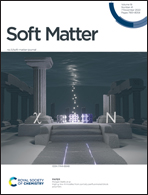A meso-scale model of clay matrix: the role of hydration transitions in geomechanical behavior
Abstract
While much progress has been made on the modeling of swelling clays at the molecular scale in recent decades, up-scaling to the macroscopic scale remains a challenge, in particular because the mesoscopic scale (between a few nanometers and a few hundreds of nanometers) is still poorly understood. In this article, we propose a new 2D granular model of clay at the mesoscale. This model is adapted to the modeling of a dense clay matrix representing geomechanical conditions (up to pressures of 10–100 MPa). Some salient features of this model with respect to the existing literature are: (1) its ability to capture hydration transitions occurring at small basal spacings (essential to model complex hydro-mechanical behaviors such as drying shrinkage), (2) the flexibility of the clay layers that becomes important at pressures exceeding 1 MPa, and (3) the control of the inter-layer shear strength critical to model plasticity. The model calibration is purely bottom-up, based on molecular modeling results only. The case of Na-montmorillonite (Na-Mnt) is investigated in detail, regarding isotropic compression (elasticity and plasticity), yield surface and desiccation. The behavior of the granular model appears well consistent with what is known experimentally for pure Na-Mnt, and offers valuable insight into meso-scale processes that could not be reached so far (role of hydration transition, layer flexibility, and impact of loading history). This granular model is a first step toward quantitative up-scaling of molecular modeling of swelling clay for geomechanical applications.



 Please wait while we load your content...
Please wait while we load your content...